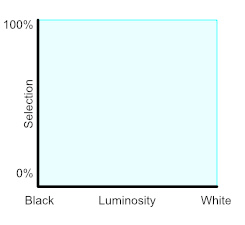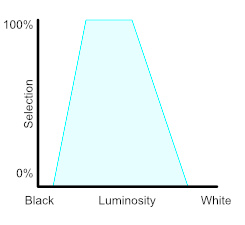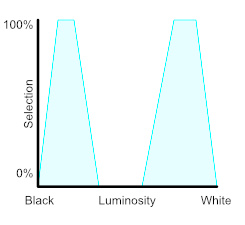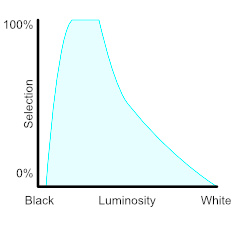It would be helpful to be able to create local adjustment masks from luminosity values - ie, be able to create Luminosity Masks for local adjustments.
+1 from me - I ran out of votes
Gets my vote
Took back my comment about masking according to color, as it is similar to U point. Still got my vote for luminosity mask though 
Hi Mike,
I couldn’t agree more, among other tasks they´d be very usefull to make selective clarity adjustments in images. May not be so difficult an option to make control points detect luminosity instead color.
Health and luck
Javier
my vote for this
This is a super-powerful feature. You might want to specify what you mean by a luminosity mask.
Here’s my take: A luminosity mask selects or partially selects pixels based on their luminosity (duh!), but the mapping from luminosity to selection should be freely user-defined. The mapping could be done similar to what the Tone Curve tool does, but maybe with straight line segments rather than bezier curves (or, at least, the option of straight lines).
The less freely I can select the luminosity mappings, the less useful the feature.
There’s another thing that’s needed: the ability to at least intersect the luminosity mask with other masks. Global luminosity masks can be useful, but there’s so much more one could do if the luminosity masks could be limited to part of an image.
DarkTable (open source RAW file processor) already supports luminosity mask and mask intersection. They have a lousy user interface for these features, but at least you could experiment with the features today if you wanted to see what you could do.
UPDATE: It occurred to me that, if it is too much work to do mask intersection, maybe the Erase tool in the radial menu could somehow be used. Maybe you’d pick the luminosity mask from the new Mask Panel and then the Erase tool from the radial palette. The Paint tool could be re-purposed perhaps to “un-erase”.
If I understand what you are saying then Capture One does something similar to this and it is a very useful feature.
I looked at tutorials for C1 and it seems to do a limited version of what I want. The C1 approach, if I understand it properly, appears to be typical and unnecessarily limited.
Here’s a luminosity selection interface that works sort of like the tonal curve.
No pixels selected:

Every pixel selected 100%:

The typical selection (what most programs seem to allow):

I know I’ve run into a program that allowed me to select multiple regions, but I don’t remember where:

And allowing bezier curves as well as straight lines:

While I think there is no reason to skip the last two, they aren’t essential. The tonal curve control already supports bezier curves, but doesn’t support straight lines. One could enhance the control to support both and use it on both interfaces. 
It is possible to do the below in Capture One as a standard luma range, I use these often and they are invaluable.
It is also possible to do the below in Capture One, but it is a two step process. Create Mask, apply luma range, rasterise mask (flatten the mask), create another luma range with different values. This can all be done in the same layer. I have never had call to use such a mask in one hit, the above type has always been sufficient for me. If I have applied multiple luma ranges usually do it in two layers as I would be targeting different elements of the image and would like to keep the two edits separate (but that’s just the way I work and understand others may work differently). Although thinking about it, because dxO does not use layers then maybe what I will call the ‘double hump’ luminosity mask would be useful.
It is possible to change the falloff of the ranges and also the radius and sensitivity of the falloff. So while C1 does not provide a curved falloff, it does allow some control of it.
An implementation of a luminosity mask as per your ‘typical’ example would be sufficient for me.
Addendum, Exposure X5 has quite a good implementation, it allows for masking via luminosity, saturation and Hue, but again is of the ‘typical’ version.
I am not sure how this stuff would work with PL and my experience, limited as it may be, is that PL does not implement masks in the traditional way and is done through local adjustment only (I may be wrong about this so please enlighten me). I presume we are talking about including some ability to luminosity masking into the Local Adjustment functionality? I don’t know how Local Adjustment masks work in PL, but it would not surprise me if there was an element of luminosity masking built in to how it currently makes the selection…
What is even better is an HSL-defined mask. There would be a new mask tool based on the existing HSL tool wheel, enhanced with ranges on S and L scales with feathering just as for the Hue. I will create a separate feature suggestion.